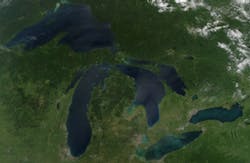EPA announces the removal of two U.S. Areas of Concern
CHICAGO — EPA announced two “U.S. Areas of Concern,” White Lake in the Lake Michigan basin and Deer Lake in the Lake Superior basin, have been removed from the binational list of toxic hotspots targeted for cleanup in the U.S.-Canada Great Lakes Water Quality Agreement, according to a press release.
Federal agencies have been able to accelerate cleaning up these Areas of Concern by using Great Lakes Restoration Initiative (GLRI) funding, delisting three areas since GLRI’s launch in 2010, stated the release.
The release reported that under the 1987 Great Lakes Water Quality Agreement, the U.S. and Canada designated 43 Areas of Concern in an effort to target sites contaminated primarily by industrial activity that occurred prior to the enactment of modern environmental laws.
The White Lake Area of Concern, located on the eastern show of Lake Michigan in Muskegon County, Michigan, was contaminated by years of pollution from chemical manufacturing, tannery operations and other sources, continued the release.
The Deer Lake Area of Concern, located along the southern shore of Lake Superior in the Upper Peninsula of Michigan, was polluted by mercury leaching into water through an abandoned iron mine as well as by other sources of pollution, noted the release.
“I couldn’t be prouder of the work we have done to significantly reduce threats to public health, enhance recreational opportunities and benefit local economies and that now, today, Deer Lake and White Lake have been delisted as Areas of Concern,” said EPA Administrator Gina McCarthy. “The [GLRI] is accelerating cleanup work in the remaining Areas of Concern, which will bring new economic opportunities to communities around the Great Lakes.”
You can find the release here.
